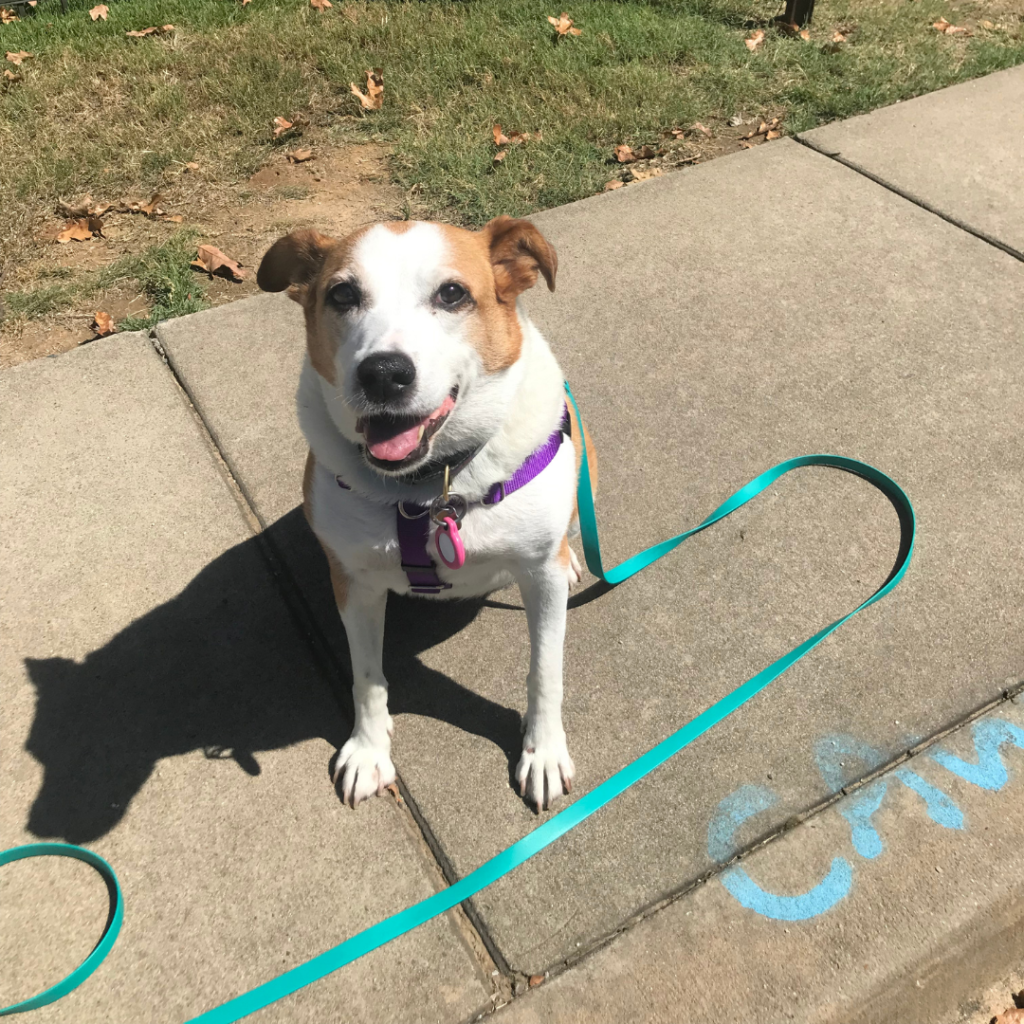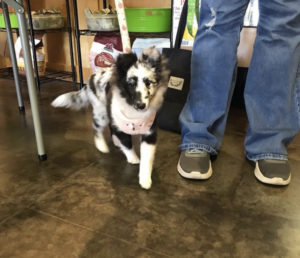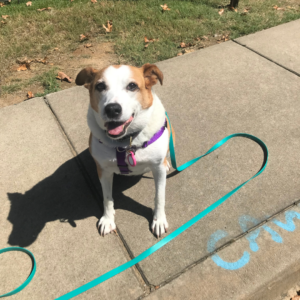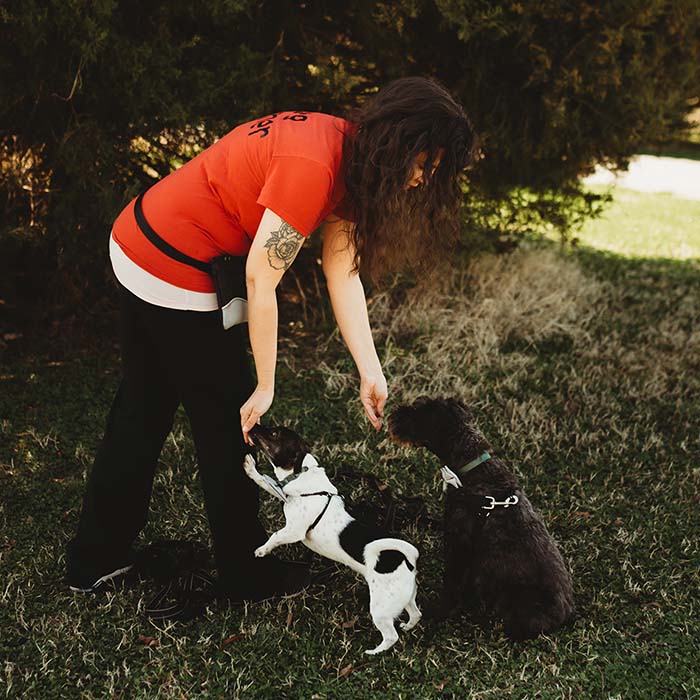There’s really no legal or common standard for walking dogs in the Little Rock area. While there are ordinances that require a five-foot leash, I have not seen or heard of this being enforced, and most local parks have a plethora of unleashed dogs. This can be quite challenging for folks trying to handle reactive, overly excited, or nervous dogs on leash.
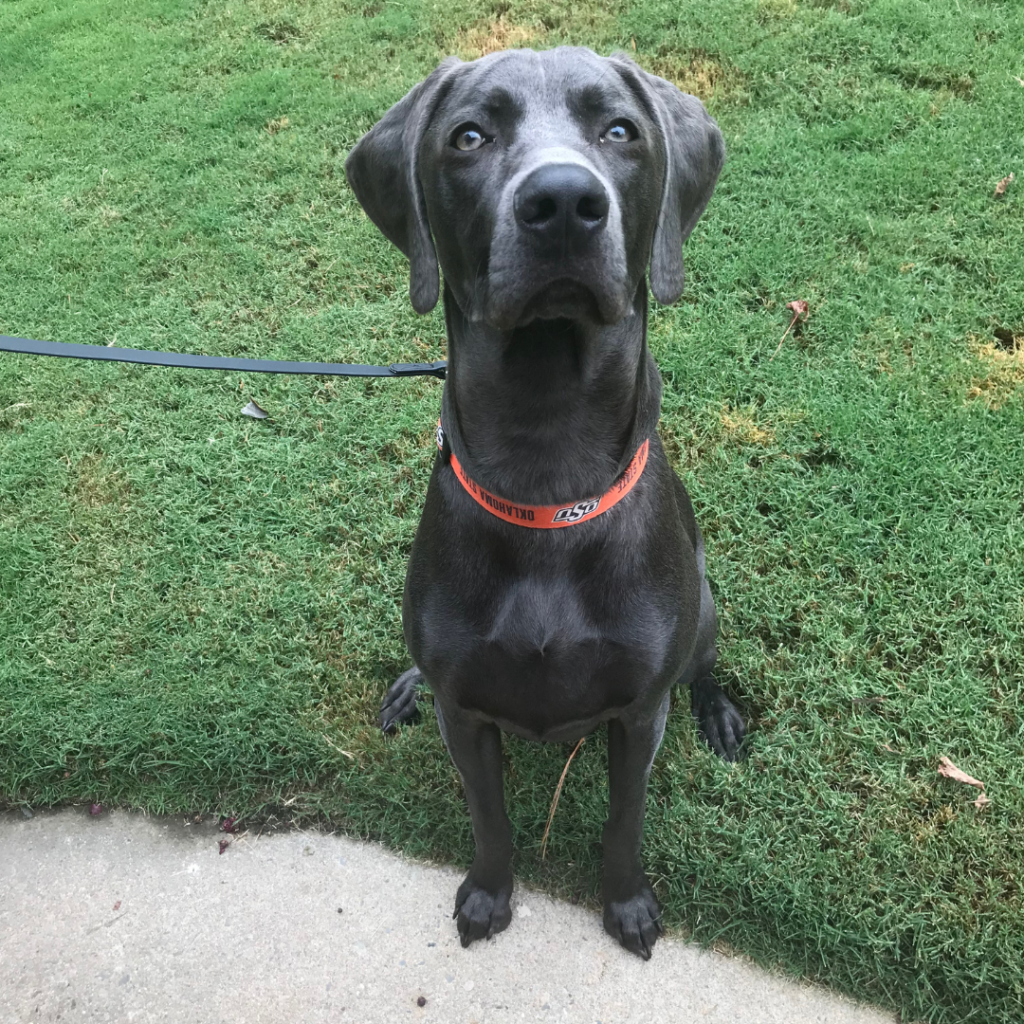
I stopped counting the amount of times I’ve heard “He’s friendly!”, even in my downtown neighborhood. While this is less worrisome for my friendly dogs, I would still rather not have to handle an off-leash dog while enjoying a walk with my pups. Dogs charging at me and my dogs is a stressful experience. Often, they come in hot and are pretty rude in their hello’s (nose to nose, barking, tense body language, particularly with a chest puffed out). And with a reactive dog, it can be an outright nightmare. Rosie has come leaps and bounds with her behavior, but encountering an off-leash dog is a lot for me and it sets her back.
It’s important to remember that Little Rock and the surrounding areas have leash laws, which means having dogs off leash, regardless of how well they are trained, is simply illegal, unless it is a designated off-leash area.
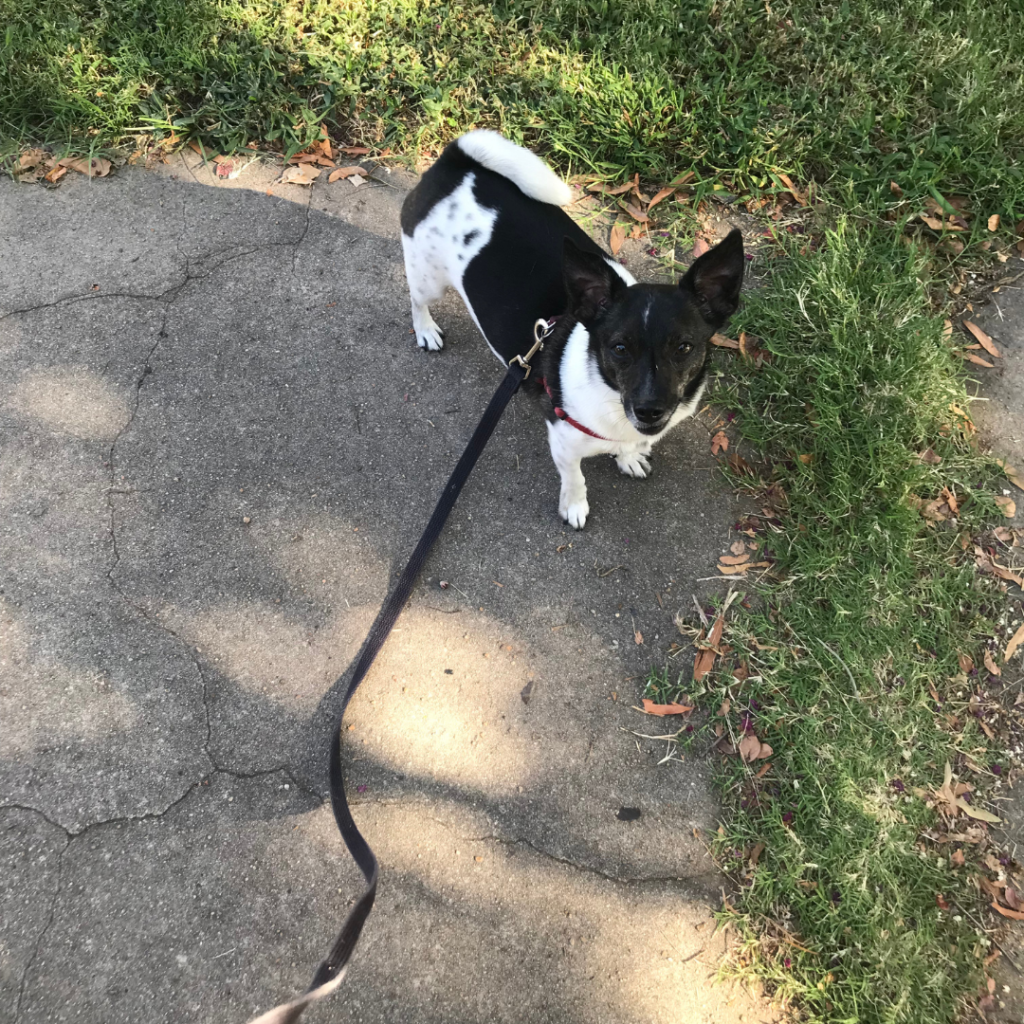
Note: Accidents happen. Gates get left open, and front doors get left unlatched, and dogs slip their collars. This blog post is about dogs on-leash and dogs intentionally allowed off-leash.
I have certain guidelines that I follow, but everyone has to figure out what’s best for them and their dogs and what works.
For my friendly dogs, I allow them to meet people when the person indicates that it’s okay. I try to avoid meeting other dogs on leash unless they have an established relationship with my dog (Hello Max!! Hello Leonard!!).
We will cross the street when we see another dog, whether body language indicates friendliness or not. If it’s a dog or dogs that I know are reactive, we often will wait at a distance until they pass by (my neighbors also do this for me with Rosie, which is amazing and makes my life a lot easier. She can now see dogs across the street, and even walk by two off-leash dogs we often see in the mornings, but she didn’t always manage this well, and most of my neighbors are understanding).
If my dogs bark at the other dog, I will ask them to focus on me. Sometimes I will ask them to sit. Either way, feeding them some treats while the other dog passes by helps keep them focused and avoids barking or other undesirable behaviors, like lunging. (I’ve had people comment on this, saying things like, “They like treats, don’t they?” Well, yes. Of course. But if they were overwhelmed, they wouldn’t even be taking treats. They are calm enough to stop, look at me, sit, and eat. And this may not seem like a big deal, but it is.)
I would recommend having some training under your belt with your dog. Some things to consider when considering what guidelines you’d like to follow with your dog include:
- Can your dog focus on you on walks?
- Do they offer a nice loose leash?
- How do they feel about people?
- How do they feel about other dogs?
Cues I use and teach include:
- Kissy noise for attention and turns
- “This way” or “let’s go” for turns (using one as a simple turn and one as a run away turn can also be helpful)
- Pause at corners and before crossing the street
- Touch for attention
- Come for redirection
- “Leave it” or “thank you” for redirection and undesirable objects
- “Drop it” for stolen objects
I tend to:
- Ask my dogs to engage with me when a person walks by. It depends on how interested my dogs are in that person on whether I ask them to move to the side and sit, or do a “go sniff” treat scatter. Sometimes I’ll ask the person if they like dogs and want to pet my dogs.
- Move to the other side of the street if someone is approaching with a dog. Again, I will engage with my dogs. Depending on how excited they are, I may just reward them for watching, ask them to “go sniff”, or ask them to sit.
I usually do not recommend that puppies meet everyone and every dog on leash. Neutrality is a better goal than friendliness, but having a system helps. I like to reward puppies for watching, and if it’s a safe situation, I like to introduce a cue like “go say hi” or “let’s say hi” to let them know it’s okay to greet. Another option is telling them “not today” and moving away from the situation. It’s easy for a puppy to develop leash frustration if they’re always meeting someone new, and then they get too old or too big and they’re not allowed to anymore.
Sometimes dogs are just overstimulated and too excited to even focus on their handler, so going back to basics and making sure they are exercised BEFORE the walk helps a lot, if you have access to a yard. Another great resource is Leslie McDevitt’s pattern games, from Control Unleashed.
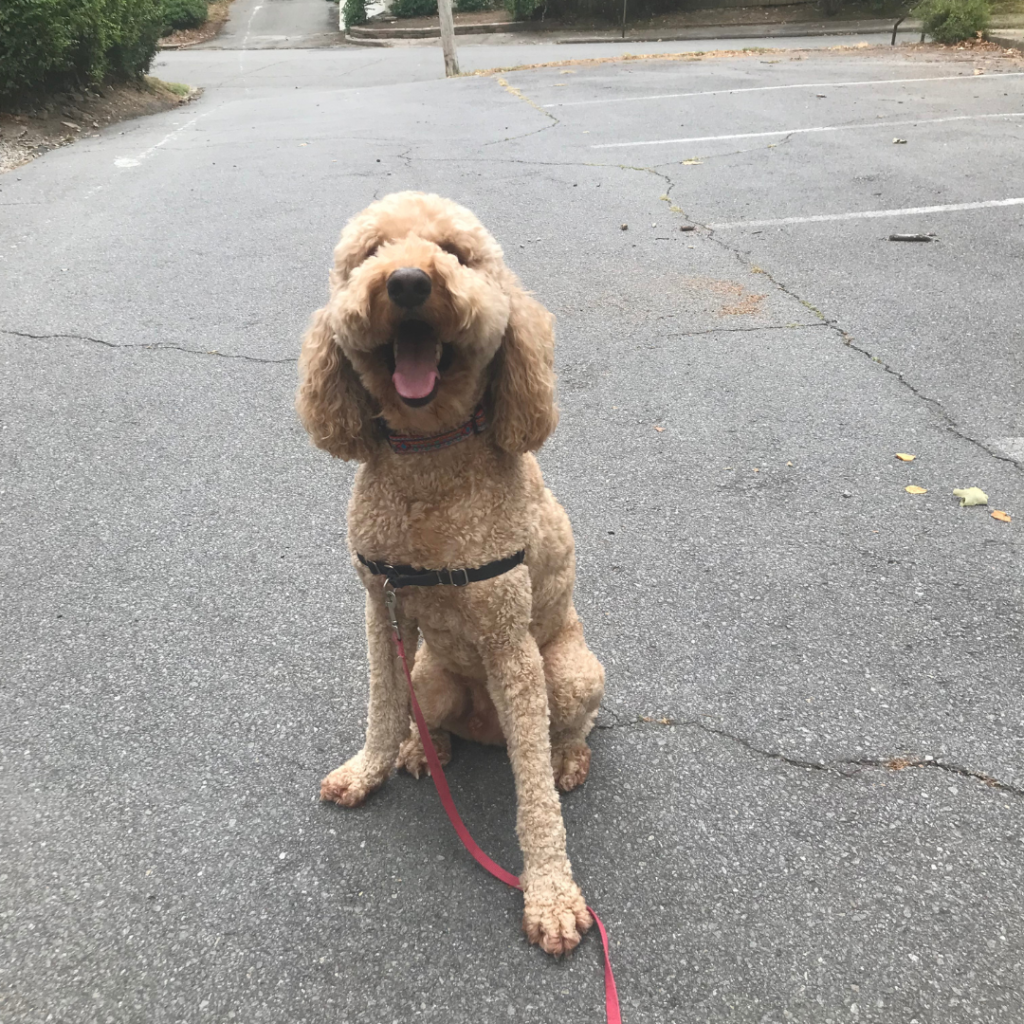
Think of walks as enrichment and not exercise, focusing on the sniffing. Dogs get so little in their lives that they can control as is, and a walk is one of the few times they can enjoy the outdoors and make some choices, like where they want to turn and what they’d like to sniff.
A Couple of Pattern Games:
- Up/Down: Drop a treat and wait for your dog to look up at you. Say “yes” when they do and drop another. Repeat 5-10 times.
- Left/Right: Drop a treat to the side and say your dog’s name while they are eating the treat. When they look up at you say “yes” and drop a treat to the opposite side.
I like to start the games inside, then right outside the front door, then down the block a bit. Using the pattern games while waiting for other dogs to pass by can also be super helpful. Pattern games help dogs focus on you when there are a lot of distractions. Leslie actually developed the games for sports training.
Remember, leash manners are different from reactivity. If your dog is reactive, the cues and guidelines above will not likely be enough.
With Rosie, who is reactive, I started off by working on leash manners, and changing our walks to off-peak times.
We also worked on:
- Engage/Disengage
- Dr. Amy Cook’s Play Way cues
- This included: an error-free leave it, leash handling, heel positioning on either side, turns, and more.
- Using distance and working at her threshold before increasing criteria
There was a time where any glimpse of another dog, cat, squirrel and bird would set her off completely. Now, we can watch all of the above, unless the squirrel runs nearby. We continue to work on her prey drive. We recently started Simone Mueller’s protocol for predation substitution, and I’m excited to continue incorporating new skills with her and my clients.
There’s not much that’s written in concrete when it comes to walks, leashes, and our dogs. Be aware of the risks and the consequences of doing things like allowing your dog off-leash, especially if they haven’t been trained across a variety of circumstances. Remember to move away from situations that make you uncomfortable, and advocate for your dog if you can.
If you need help communicating with your dog on leash, let’s chat!

